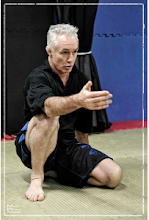 People often ask me, how I get so many things done in the course of any given year. To me, it always seems like a bit of a strange question, as from my own perspective, it always seems as though I do have plenty of free time on my hands. it's true though, I do get stuff done, but I tend to put my head down and get on with the job when circumstances require - as opposed to waffling on about it. This year, I built an investment property, wrote another book, taught 750 odd classes and travelled to conduct near on 100 seminars - apart from this, I spent quite a bit of time in hospital with my eldest son - and in between took a trip to Singapore, a trip to the USA and a trip to Europe - yet as I write this blog, my inbox is sparkling and empty - meaning I have attended to the 25 odd e-mails that have come my way on this day.
People often ask me, how I get so many things done in the course of any given year. To me, it always seems like a bit of a strange question, as from my own perspective, it always seems as though I do have plenty of free time on my hands. it's true though, I do get stuff done, but I tend to put my head down and get on with the job when circumstances require - as opposed to waffling on about it. This year, I built an investment property, wrote another book, taught 750 odd classes and travelled to conduct near on 100 seminars - apart from this, I spent quite a bit of time in hospital with my eldest son - and in between took a trip to Singapore, a trip to the USA and a trip to Europe - yet as I write this blog, my inbox is sparkling and empty - meaning I have attended to the 25 odd e-mails that have come my way on this day. I approach my strength and conditioning workout for example, as I do most other things - with a mindset of getting it done as quickly and efficiently as possible. The last thing I would want to do is spend an hour and a half in a gym, socializing and wading my way through a boring and long-winded workout. I want to get my heart-rate up as fast as possible, and keep it there for 30 minutes, while taxing myself on a variety of fronts (functionality of fitness, strength, flexibility, anaerobically, mentally, etc). Thirty minutes - and I'm done! I do not like to waste time.
I attend to e-mails through the day, I act on them, I leave my inbox empty. if I set to writing a book - I set aside a block of time each day and put my head down and get it done. I do not like attending to something and waling away having to come back to it - I would rather not attend to it at all, until I have the time to 'knock it on the head' and put it behind me.
I have listen to many people over the years, talking endlessly about the things they want to do - without ever taking the action to do those things. I have often mused that many people could mote than likely do the things required of them in the there jobs, in probably ten hours or less, if they were motivated (and allowed) to do so. people love to 'waffle on' - but if you want to fit more into your life - make a habit of slicing off some of the 'time-wasters' that creep so insidiously into our day-to-day lives.
We can't create more time for ourselves - but we can almost certainly free up some of the time we do have. Time, after all, is the one resource we cannot really afford to waste - none of us can get more than our allocated share.
Empty your inbox ...
JBW


































